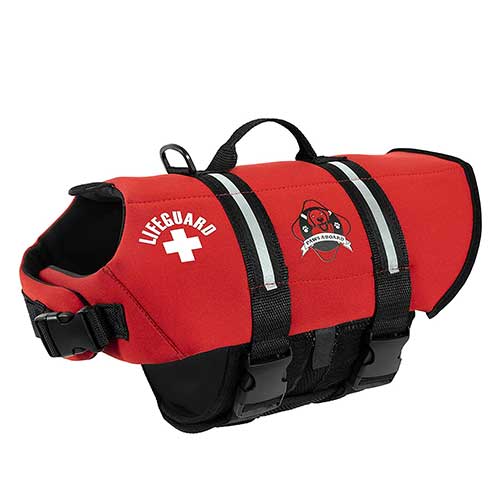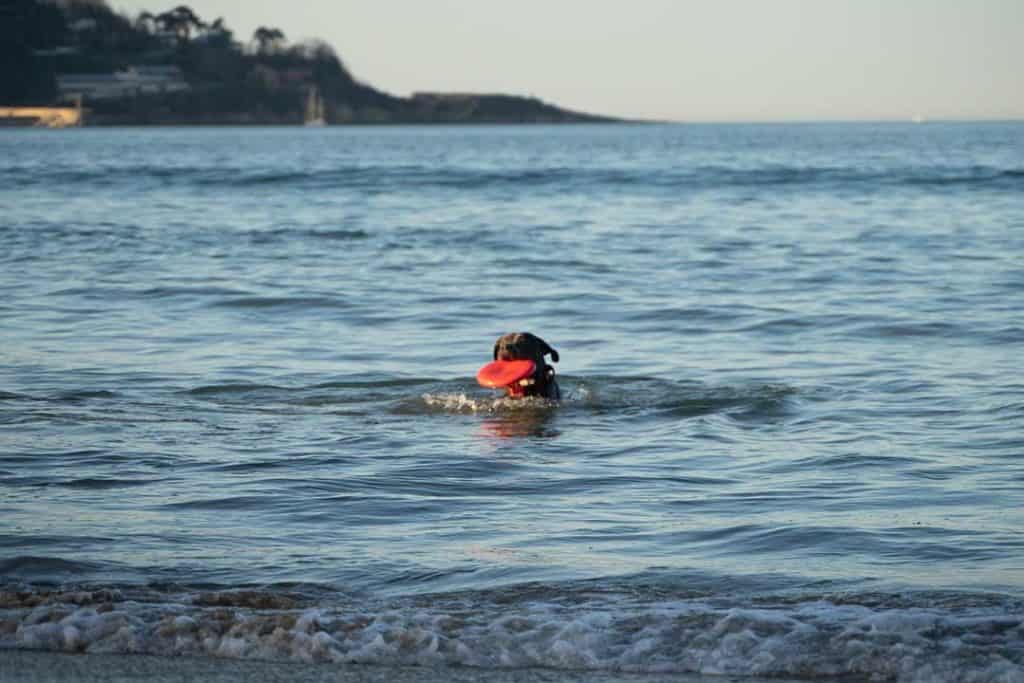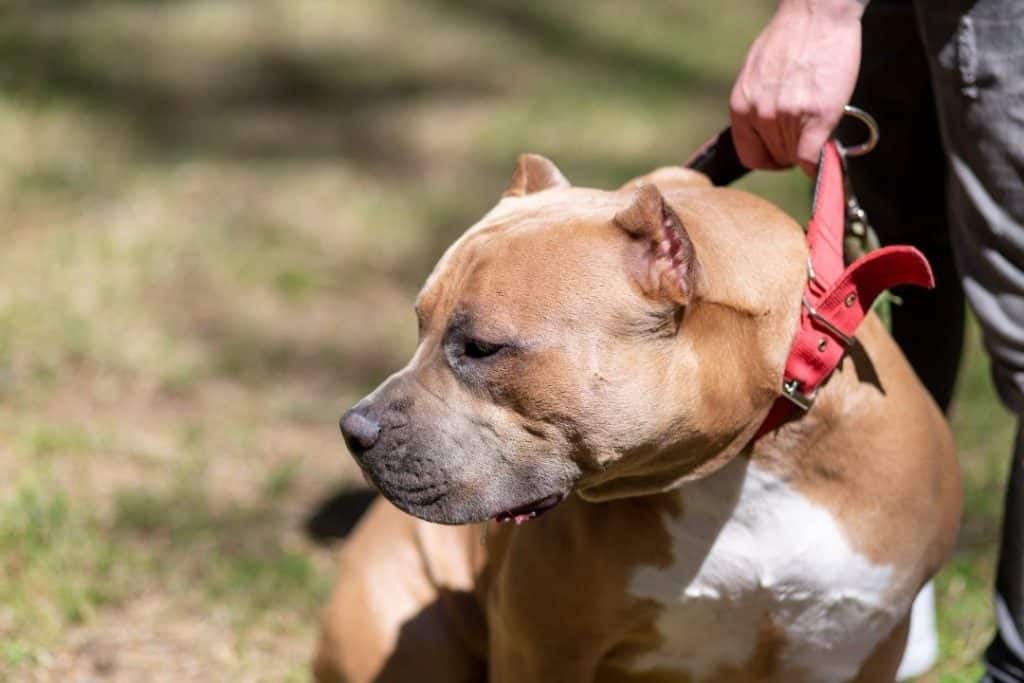This article may contain affiliate links, and I will be compensated if you make a purchase after clicking on my links (at no additional cost to you)
With their distinctive muscular builds, American Bullies need active owners to engage them in lots of fun exercises. While going for a walk and playing fetch may sound good enough, nothing beats the joy of splashing around in pools and bonds. But the question begs itself: Can American Bullies swim?
American Bullies can swim, but they may not have the natural skills of Labrador Retrievers and Irish Water Spaniels. But you can still teach your Bully to swim if you’re willing to invest the effort. Start with a life jacket (with a D-ring), pick a shallow pool, and guide your dog in with a leash.
Today, I’ll be sharing my experience as an XL American Bully owner. We’ll give you a step-by-step guide on how to train your dog to swim and will also recommend some essential safety tips. But first, checkout Oso’s glorious swimming skills (10 months old XL bully at the time of this video):
Let’s dive right in!
Why Swimming Might Be Difficult for American Bullies
To understand why American Bullies may have a hard time swimming, we should first understand why some breeds can probably beat Michael Phelps in a race without prior training!
The Anatomy Behind Swimming Dogs
For a dog to be a good swimmer, he should have three main features:
- Long muzzle
- Light, small head
- Long legs
Why are these features important? Well, with a long muzzle and a small head, dogs can breathe while swimming in a natural posture. And, of course, long legs are crucial for efficient paddling.
Take a look at Portuguese Water Dogs, Labrador Retrievers, Standard Poodles, and any breed that naturally loves water. You’ll see that they go above and beyond these anatomical features.
The Anatomy of American Bullies
American Bullies have stocky bodies with relatively short necks. Their muzzles aren’t as short as those of Pugs and Boxers, but they’re still shorter than those of Labrador Retrievers. Plus, most American Bullies have the majority of their weights sitting at the chest.
When your American Bully goes into the water for the first time, his heavy chest will pull his head below the water surface. To overcome this, your dog will have to swim upright. And with a short neck and muzzle, he’ll have to exert significant effort to breathe.
Here’s a video of an American Bully trying to swim for the first time:
Around the 2-minute mark, the dog retrieves a wooden stick that the owner had thrown into the water. Halfway through, the dog starts swimming vertically. He freaks out, trying to stay afloat by kicking the water with his front legs.
And because his legs aren’t long enough, he returns back to land at a slow speed. With such effort, American Bullies will surely drain their energy faster than other breeds.
To provide some context, take a look at how Labrador Retrievers swim in the following video. Notice how they effortlessly paddle through the water while keeping their bodies horizontal. Their long muzzles ensure a consistent supply of air at all times.
Your American Bully Size May Aggravate the Problem
As you may already know, American Bullies exist in four sizes. Here are their average measurements according to the American Bully Kennel Club.
| Breed size | Male height (at the shoulders) | Female height (at the shoulders) |
| 14–17 in (36–43 cm) | 13–16 in (33–40 cm) | |
| Standard | 17–20 in (43–51 cm) | 16–19 in (41–48 cm) |
| Classic | 17–20 in (43–51 cm) | 16–19 in (41– 48 cm) |
| XL | 21–23 inches (51–57 cm) | 19–22 in (48–54 cm) |
Generally speaking, pocket American Bullies will find it more challenging to swim than the other varieties. Due to their short stature, they can’t swim horizontally without a life jacket, and their short legs won’t propel them efficiently.
How To Teach Your American Bully To Swim
If your American Bully loves to play in the water, don’t kill the fun. He might not be built for swimming, but he can overcome his anatomical shortcomings through training. Let’s see how.
Get a Life Jacket
Most dogs freak out when they try to swim for the first time. That experience can scar them for life, meaning that they’ll never think about going anywhere near the pool, let alone inside it!
That’s why using a life jacket is essential. Your dog may still get nervous despite wearing a life jacket, but he’ll soon realize that there’s nothing to worry about.
We like the Paws Aboard Dog Life Jacket. It’s easy to put on and take off, and it has a D-ring at the top so you can keep your dog on a leash — that’s extremely helpful if you’re swimming at a public beach.
(FYI, some beaches and parks ban American Bullies on their premises, claiming that they can be “dangerous”)

It’s important to familiarize your dog with the life jacket you’ll buy before going into the water. Allow him to wear it for a couple of hours, and don’t forget to shower him with treats and attention.
Pick a Suitable Place
Ideally, you should train your dog in a pool where you can also swim and join in the fun. If you don’t have a pool in your backyard, search for shallow ponds or lakes. Rivers and beaches aren’t ideal for a first encounter because they can seem too intimidating for your dog. Plus, the strong currents will make it harder for him to paddle.
Carry Your Dog Into the Water
When introducing the dog to swimming for the first time, never toss or jerk him into the water. If he’s already scared, such behavior will only worsen the situation.
Instead, slowly carry your dog into the water. Keep your hands wrapped around his chest and belly at all times, but don’t squeeze — the goal is to keep your dog swimming horizontally.
If your dog seems distressed, take him out and let him rest for a while before trying again. Your dog should be completely comfortable inside the water before moving to the next step.
Use the Leash To Guide Your Dog Into the Water
While you’re inside the pool, guide your dog into the water by gently pulling the leash. You should stand right in front of the steps so your dog can walk inside the pool rather than jump. Once your dog reaches you, let go of the leash to allow him to get out of the pool.
Repeat this process until your dog doesn’t seem to pull on the leash as you drag him inside.
Familiarize Your Dog Around the Pool
While standing outside the pool, gently push your dog into the water. Then, use the leash to walk your dog all around the pool before you bring him back to the steps. As you repeat this process, your dog will memorize the location of the steps, so he’ll know how to react if he accidentally falls into the pool when you’re not around.
Have Fun!
Once your dog learns how to get in and out of the pool, it’s time to start having fun! Toss his favorite toy or ball into the water and tell him to get it. Or you can have him chase you to get his tasty treats.
As your dog builds the necessary skills, you may allow him to swim without the life jacket. But of course, the life jacket would be mandatory if you’ll, say, paddleboard with your dog in deep waters.
Final Thoughts
Even though most dogs love playing in the water, some of them can’t stand getting their paws wet. If your dog dashes toward the land every time you pull him into the water, he probably doesn’t feel like swimming.
If that’s the case, we don’t think it’s a good idea to force him to learn. You’d be better off choosing another activity that you both can enjoy.
Your dog can try swimming in the pool starting from 10 weeks of age. If you want to start earlier, your bathtub will be your best bet.
Sources
- Wikipedia: American Bully
- The American Kennel Club: Can All Dogs Swim?
- PetMD: How to Teach a Dog to Swim

I created this blog to share my passion for bullies, and help current and future pitbull owners with things like diet and education.
Hope you find it useful, don’t hesitate to drop a comment on my articles!



